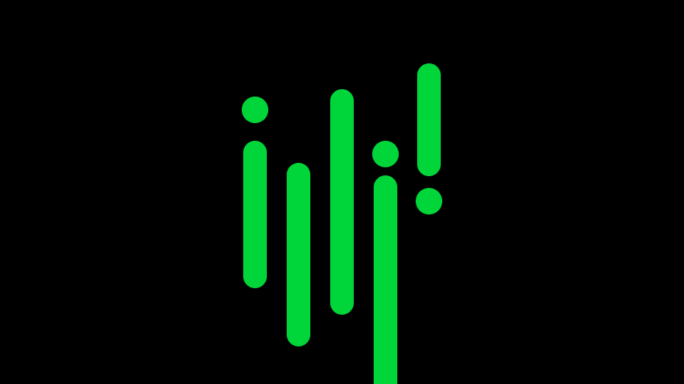What to consider when starting a side hustle: Top 12 FAQs answered
Want to start a side hustle? Discover the answers to some key questions you may have before you take the plunge.

So, let’s cut to the chase. How do you start a side hustle that will supplement your income, and may even become your full-time gig in the future?
Say you’ve got an idea for a side hustle – perhaps based on an interest or passion, a gap in the market, or a customer need that you’ve identified. Now you need a play-by-play for transforming it into a bona fide business.
This article takes a close look at the business admin considerations that need to be front and centre, and covers the most searched for frequently asked questions (FAQs) on how to go from side hustle to startup.
Plus, we feature advice from the experts who’ve scaled their own small businesses successfully.
Here’s what this article covers:
- 1. Do I need a business plan?
- 2. How do I write a business plan?
- 3. How long should my business plan be?
- 4. How do I find customers?
- 5. Do I need to worry about HMRC?
- 6. What if I make less than £1,000 in a tax year?
- 7. What if I need funding to get started?
- 8. What’s the best way to manage my income and expenses?
- 9. Should I set up a business bank account?
- 10. When should I hire an accountant?
- 11. How do I get paid?
- 12. When should I hire other people?
- Final thoughts
1. Do I need a business plan?
Yes. Next question.
Seriously, we recommend you don’t skip this step.
Even if you already have customers lined up, you need to document and plan the bones of your business if you want longevity.
Taking the time to strategise will help you later down the line, no matter how small your side hustle is.
Why?
Because your business plan is the roadmap your business will take, considering:
- How you define your unique selling proposition (USP)
- If there is a profitable market for your offering
- Who your competitors are and what makes you stand out in the market
- Overhead costs, paying yourself a salary, and cash flow.
Your business plan is how you prepare to be successful in your business – a must-have.
2. How do I write a business plan?
Just as each journey needs its own map, business plans will be different. Many will have the same elements, but some will be more complex than others depending on the business model.
We’ve created a downloadable business plan template for you to use, but here’s a breakdown of the common components:
- Value proposition. This section explains the unique value of your offering. It needs to be cut and dry, no jargon or corny marketing speak.
- The problem you solve. This is basically your ‘why’. What problem do you solve? The solution you provide can resolve a known problem for your ideal customer, or one they don’t yet realise they need. This section explains that.
- Target market and competition. Who are you selling to and who else is selling to them? What other options do your customers have and what are their deciding factors when choosing? This will help you to identify your strengths and weaknesses, again, helping you to prepare for success.
- Sales and marketing. How will you reach your target market to make sales? How will you explain your offering to gain their interest? In this section, you identify where your target audience is and your plan to go there.
- Budget and sales. This is where you start to look at forecasting sales, cash flow, and where you’ll spend your money. How many sales do you need to make to turn a profit after you settle your expenses?
- Goals and milestones. How will you measure success? This section is where you set your milestone targets to keep your business’ bigger picture within view. Vague targets are just ideas. Assign yourself due dates and go into detail about what needs to happen to achieve each goal. Things will be more manageable this way.
- Finances. Break down how money will be used to get set up and maintain operations. Detail how you plan to pay off debts.
- Risks. This section highlights what could go wrong and how likely it is for those things to happen.
It can be easy to feel overwhelmed with all the things to consider.
However, one easy way to give yourself a 360-degree view of where your company’s blind spots are is by doing a SWOT (strengths, weaknesses, opportunities and threats) analysis.
Here’s what that is in more detail:
Strengths
What is your business already doing exceptionally well? How can your strengths help you to deal with risks?
Weaknesses
In what area is your business weak? Is it knowledge? Money? Bandwidth?
Opportunities
Where are the opportunities?
Big or small, set a goal for each opportunity that is specific, measurable, attainable, relevant, and can be done in a realistic timeframe (or SMART goals. Yep, an acronym in an acronym).
Threats
Threats tend to attack your weaknesses first, so use this as another opportunity to remedy your weaknesses and reduce the risks.
3. How long should my business plan be?
This depends.
When you first start out, your plan could be on one page. Or, nailing down the details of your business could take several pages.
This will be a living document for you – you will update it regularly as your company evolves.
Review it often to ensure things are moving in the right direction, or use it as your blueprint to change direction completely.
4. How do I find customers?
Now you’ve built a roadmap, it’s time to execute on your first paying customer and validate your business.
This is how you confirm that your fantastic-sounding idea actually solves a problem that exists, and that people are willing to pay money for it.
You might already have the connections to secure customers from your experience, background and contacts.
These customers could be your best prospects for immediate sales. They offer the most cost-effective way to increase business because you already have a relationship with them.
If you don’t have connections, here’s some suggestions for finding your first customer:
- Create a functional website and set up social media profiles (you don’t need to every single social media channel – perhaps start with one or two) to explain what your business does and provide ways to purchase your product or service.
- Cold call and pitch your services, both online and offline. Advertise in both traditional (offline directories, community boards) and digital ways, depending on your budget. Get visible – using the media or attending online events, for example.
- Partner up with business owners who offer services that you customers need, for cross-promotion.
5. Do I need to worry about HMRC?
Yes, depending on how much you earn.
If you earn more than £1,000 in a tax year from your side hustle, you’ll need to register as a sole trader, and use the Self Assessment system to tell HMRC about what you’ve earned (and pay any taxes that are required).
This applies even if you already have a full-time job that pays you a wage for which tax and National Insurance are deducted by your employer (that is, through PAYE).
If your side hustle brings in £85,000 or more in a year, awesome. But in that case, you’ll need to register for VAT, too.
This means charging VAT on products and sending VAT Returns to HMRC.
It’s even possible to create a limited company, through which you can operate your side hustle and pay yourself a wage. Again, you can do this even if you’re employed full time and receive a wage.
But most people with a side hustle simply register for Self Assessment.
This means they calculate how much income tax and National Insurance (Class 4) is due on what they’ve earned, and then submit a Self Assessment tax return form electronically by 31 January each year.
To see how much you owe, you’ll need to know how much you’ve already paid in tax and National Insurance via your wage.
That info is on the P60 and P11D that your employer provides between April and May each year.
Pro tip: You can claim expenses via Self Assessment, which can reduce the tax you owe from your side hustle. If your side hustle is one that requires buying consumables, then this makes a lot of sense.
After starting your side hustle, you need to register for Self Assessment as soon as possible, but definitely by 5 October in your business’ second tax year.
6. What if I make less than £1,000 in a tax year?
This is considered casual income and you don’t need to tell HMRC about it. Don’t get this confused with profit. This is based on gross sales, not how much you keep in your wallet.
Another important note: there’s no way to claim the tax back on expenses, as you can with the Self Assessment system mentioned earlier.
You might find you keep more money overall if you do this, even with an income under £1,000.
It’s worth noting that HMRC’s recommended approach is that you should register your side hustle as a business, regardless of income and if you have any tax or National Insurance to pay.
7. What if I need funding to get started?
There are tons of ways to get the funding you need to get started but you have to be immaculate with your plans.
To start with, we’ll look at traditional funding methods.
For traditional financing from a bank or an investor, you must demonstrate that you’ve considered every risk and opportunity stemming from your business idea and that you’ve done the research to account for where you’ll spend the money.
Your business plan will come in handy here.
Let’s look at these two in a bit more detail.
Funding through business loans
Pros: This option allows you to keep total control of how your business moves forward.
The loan repayment terms can be straightforward – make payments on time regularly and everyone’s happy. Financial service providers such as banks aren’t looking to make a huge profit off your loan, either.
As long as you keep your loan in good standing, they’re pretty much out of your way.
Cons: Getting approved for a business loan can be difficult if you don’t have a good credit history.
You can use personal assets such as your home as collateral – but if the worst happens, your home could be repossessed.
Funding through investors
Pros: Investors are loaded with cash.
You can use that to purchase technology to help you work faster and smarter for your customers.
You can make more product, if that’s your thing, and hire more people to help you saturate your market.
Your investor wants to help your business operate on the highest level for their investment’s biggest return.
They won’t hound you for repayment because they’ll make their money through equity in your business. The more you make, the more they make.
Cons: It’s a competitive market for the attention of investors. Entrepreneurs everywhere claim to have the next big thing in their pocket.
Unless your business is already doing massive numbers with a high earnings forecast and manageable risks, it can be hard to stand out among the crowd.
Plus, investors will want equity in your business, so you’ll have to give up a portion of your control.
Alternative funding options
Loans and investments can seem glamorous and tempting, but in reality not everyone will be in a position for either (or will have a desire to consider them).
Don’t despair – these two funding methods aren’t the only option for your side hustle or future business.
You could use your own savings or income from your primary gig. There’s the option to reach out to friends and family.
You might decide to go down the crowdfunding route – there are numerous online platforms you could try.
There’s also the option to try and get a government grant (and if you’re successful, you won’t have to pay it back – bonus).
8. What’s the best way to manage my income and expenses?
Easy. Accounting software.
It takes all the guesswork out of how to create processes to capture the data you need to forecast cash flow and calculate your taxes accurately.
You can save time processing data and skip straight to planning and strategising for your business’s future.
9. Should I open a business bank account?
If you’re running your side hustle as a sole trader, or are freelancing or working as a contractor, then you don’t have to open a business bank account.
But if you’ve set up a limited company, your business will be legally separate from you, then you will need a business account.
However, no matter which of the two camps you’re in, opening a business account is a good move.
The key to accuracy when it comes to reporting and calculating taxes is keeping your business and personal expenses separate.
That means separate statements, debit cards, everything.
And that is why it’s worth having an account for your business affairs that’s separate to your personal account.
Top tip: Your business account should be free of any purchases that don’t qualify as a business expense.
10. When should I hire an accountant?
It makes sense to use an accountant right away, but it isn’t mandatory.
If your side hustle is one in which you incur expenses (that is, you buy materials or consumables), then the use of an accountant is likely to pay for itself.
They’ll know what you can claim to offset your total tax bill.
Using an accountant also saves a lot of time and effort when the time comes to file a tax return, and they will remove the stress and worry that you might’ve got it wrong.
If you bring an accountant in right away, they can help you decide if you should set up as a sole trader or limited company.
They can walk you through the tax implications of each and help you make your choice based on your business ambitions.
Tom Coward, chief financial officer (CFO) of Cytora, a platform that helps insurers to underwrite more accurately, advises to hire an accountant once managing your finances becomes unmanageable.
He says: “I suggest dividing your financial tasks into two categories.
- Do it yourself (DIY): Business critical things such as cash flow forecasting and business plan modelling.
- Hire an accountant: Things you must do but aren’t a value add for you such as VAT reporting and statutory accounting, and repetitive things like payroll, payments, and invoicing.
“If the DIY category becomes too much and you can afford it, bring someone in-house. You can start with a portfolio finance director who does this for two or three companies.”
11. How do I get paid?
First, think about what type of cash cycle you have. This is the time between completing a job and getting paid for it.
If you’re a retailer or sell products online, then the buyer usually pays you immediately, so the cash cycle is very short.
But if you invoice customers in a business-to-business transaction, you’ll probably need to wait for payment anywhere from 30 to 60 or even 90 days.
The fastest way to see improvements in your cash flow is to ensure you have tight payment policies from the very beginning.
Consider these actions:
- Ask customers to pay by credit card and/or direct debit. It gives them a chance to conveniently pay the bill (for the former option, they can enjoy the interest-free repayment grace period offered by every credit card company; for the latter, it can be set to a regular cadence, meaning the customer doesn’t have to think about it).
- You could also offer online payment methods such as GoCardless and Stripe to your customers.
- Keep new customers on a maximum credit limit until they have established a favourable payment history with you.
- Ask customers for deposits upfront to reduce your exposure to late payments.
- Ask customers for progress payments as you go, especially for large jobs.
- Move from credit sales to cash sales.
Along the way, measure the average number of days it takes you to collect debts so you can see if these changes to your payment policies have a positive impact on your cash flow.
12. When should I hire other people?
Sid Moore is the founder of Moore Accountancy and she has some great advice here.
On hiring people, she says do it “when you don’t have the capacity – or more importantly the expertise – to handle something yourself”.
The point is to be able to remain focused on what you’re best at, and that’s serving your customers.
If there are parts of running your business that you find tedious, it’s best not to risk valuable time and inaccuracies.
Moore adds: “I suggest subcontracting work out where you can as an easier step for getting additional support.
“With a professional at the helm, you won’t have to worry about the risks of tax penalties, cash shortages, making payroll, and missing deadlines.”
Your cash flow and forecasting will dictate how soon you are able to hire the support you need, so that is the best place to start investing if you are not especially skilled in that area.
Final thoughts
There’s only one way to test if your side hustle has what it takes to make you money – and that’s to give it a try.
And at the same time, stay organised with your finances by using accounting software and you’ll have the clearest view to make smart decisions that will keep your business moving in the right direction.
Editor’s note: This article was first published in March 2021 and has been updated for relevance.
Side hustle toolkit (reference only)
Get your free guide, business plan template and cash flow forecast template to help you boss your side hustle and achieve your goals.







Ask the author a question or share your advice